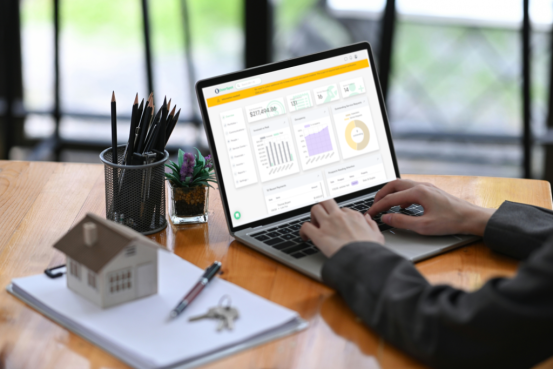

Property Management Software (PMS) has advanced dramatically since its early use in the late 20th century. Once limited to basic functions like recording tenant information and collecting rent, modern PMS solutions have evolved into sophisticated, all-in-one platforms. They now integrate automation, analytics, and cloud-based capabilities, enabling managers to move away from repetitive administrative work and focus on tenant engagement, asset performance, and long-term growth.
Property Management Software (PMS) has advanced dramatically since its early use in the late 20th century. Once limited to basic functions like recording tenant information and collecting rent, modern PMS solutions have evolved into sophisticated, all-in-one platforms. They now integrate automation, analytics, and cloud-based capabilities, enabling managers to move away from repetitive administrative work and focus on tenant engagement, asset performance, and long-term growth.

Property management software is essentially a centralized digital system designed to simplify and automate the core functions of property oversight. From lease management and maintenance scheduling to tenant communication and financial tracking, these platforms consolidate all essential tasks in one place. Key features typically include:
Automated scheduling for property viewings, repairs, and inspections
Centralized dashboards for streamlined tenant communication
Real-time reporting and data analysis for smarter decision-making
This technology-driven shift allows property managers and landlords to improve accuracy, work more efficiently, and dedicate more energy to enhancing tenant satisfaction. By minimizing manual work and providing actionable insights, PMS becomes an indispensable strategic tool rather than just a back-office program.
A defining strength of PMS is its ability to organize and automate daily tasks. Managers can set maintenance reminders, allocate staff responsibilities, and track appointments in a unified platform. With shared calendars and real-time progress updates, delays are minimized, accountability increases, and overall service quality improves.
Accurate occupancy data is critical for revenue optimization. PMS systems provide instant visibility into which units are leased, vacant, or under review. This helps owners predict vacancy patterns, adjust pricing strategies, and target marketing campaigns effectively to sustain high occupancy levels.
Rent collection, invoicing, and expense tracking can be overwhelming without proper tools. PMS simplifies this process by generating invoices, sending payment reminders, and reconciling transactions automatically. Many platforms integrate with accounting software or offer built-in financial dashboards, reducing late payments and ensuring more stable cash flow.
The automation of routine tasks—such as issuing rent receipts or assigning service requests—saves significant time, lowers administrative costs, and reduces errors caused by manual input.
With integrated messaging systems and automatic alerts, tenants stay informed about maintenance schedules, policy changes, or inspections. This transparency helps build trust and smoother landlord-tenant relationships.
Beyond operations, PMS platforms serve as valuable data hubs. By analyzing tenant behavior, occupancy rates, and maintenance trends, property owners can make informed decisions to improve profitability and enhance tenant experience. These insights highlight inefficiencies and uncover new opportunities for business growth.
When evaluating PMS options, keep these criteria in mind:
Feature Coverage: Does it include essentials such as tenant screening, rent collection, and reporting?
Scalability: Can it adapt to your business if your property portfolio grows?
Ease of Use: Is it intuitive for both managers and tenants?
Cost Structure: Does the pricing model—subscription or per-unit—fit your budget?
Support Services: Is there reliable onboarding, training, and customer support available?
Exploring reviews, testing demos, and comparing trial versions can help identify which solution aligns best with your operational needs.
In today’s real estate landscape, PMS is no longer optional—it’s essential. By automating time-consuming processes, enhancing tenant engagement, and delivering valuable insights, these platforms form the backbone of efficient property operations.
Investing in the right PMS solution not only lowers operational costs but also strengthens tenant retention and accelerates business growth. As property management continues to evolve, embracing technology will be the key to long-term success. Now is the moment to explore how modern PMS can elevate your operations to the next level.